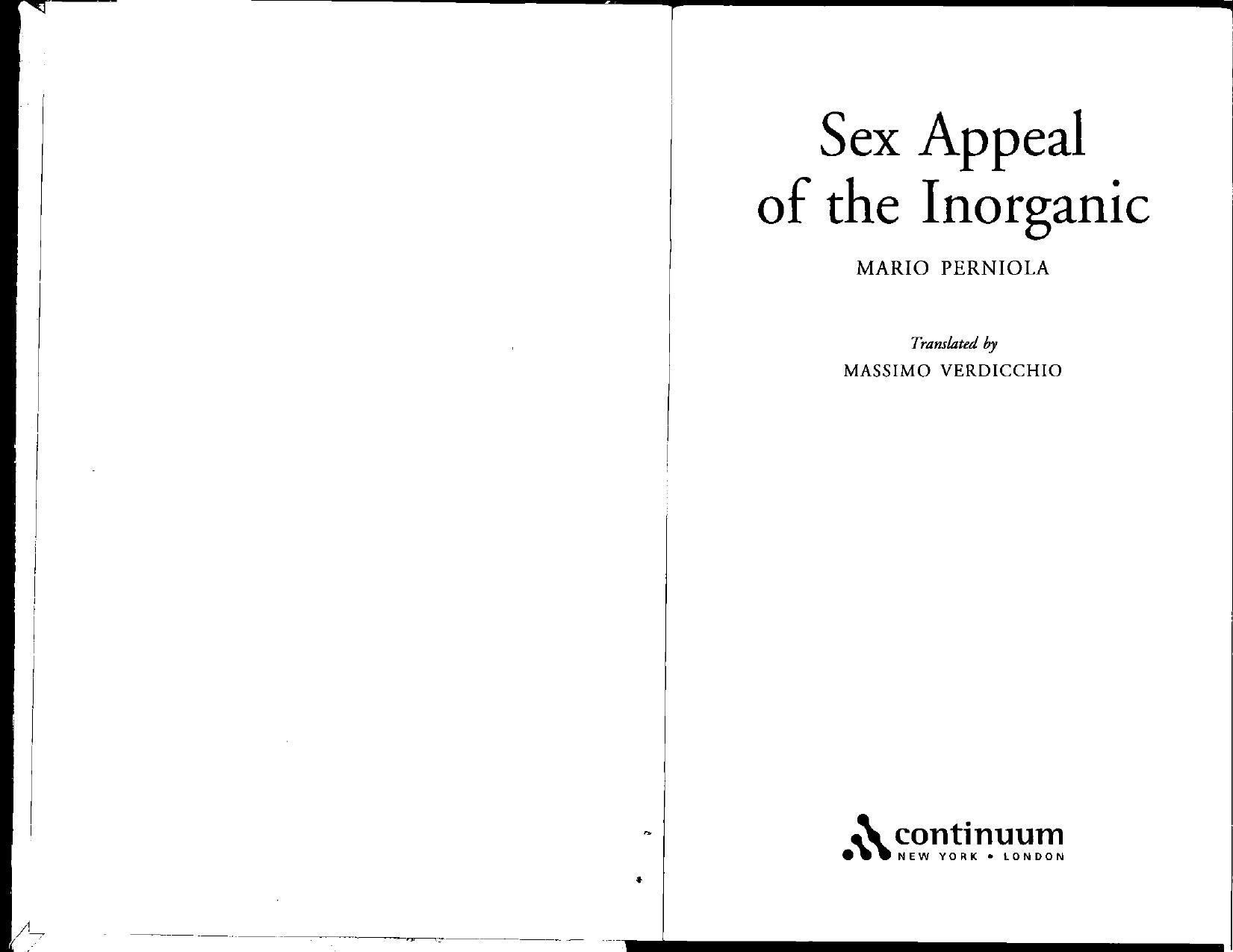The sex appeal of the inorganic by Mario Perniola

Author:Mario Perniola
Language: eng
Format: epub, pdf
ISBN: 978-3540284758
Published: 2020-05-27T16:00:00+00:00
Vampirism and Sex Appeal of the Inorganic
Porosity is the specific characteristic of the vampire, this disturbing figure that had such great success in fantastic, literature and the cinema of the nineteenth and twentieth centuries. The principal action of the vampire is precisely that of absorbing, sucking and drinking the blood of its victims, by appropriating their vital lymph as a sponge, and transmitting his mode of being to them. But what is a vampire? What is his sensitive horizon? Those who give and receive the disquieting piercing kiss, what are they trying to prove?
The vampire is a being hallway between life and death. This intermediary situation can be seen as belonging to a dead man who is not completely dead, or to a living being who is not completely living because he is already deprived of some essential aspects of life. The Romanian word nosferatu, which means ânot deadâ, becomes synonymous of vampire, and shows that the vampire must not be seen so much as a real dead that comes back to life, as false dead or, which is the same, false living, or, more essentially, as something else, something different with respect to life and death. This state which is not life or death is precisely the sex appeal of the inorganic, the neutral and impersonal experience of the thing that feels. Now collective imagination, from Romantic noir to horror, has been literally obsessed with a non-subjective feeling, not referable to an identity, personal, catalectic and lethargic, anonymous and opaque, inorganic, post- vital, posthuman, pre-mortuary, and pre-funerary.
In the work of Edgar Allan Poe, the great explorer of the boundaries between life and death, the attention to the problem of what one feels when accessing an extreme experience, which goes beyond the normal state of consciousness, returns in an obsessive way. In fact, his characters have for the most part survived terrible events, have escaped enormous dangers against any reasonable expectation. They no longer have anything to fear because they have already known all that is terrible. There are those who have been buried alive, have endured incredÂible storms, have undergone terrible tortures, have witnessed incredible transformations of their or othersâ bodies. What all these survivors have in common is their access to another world which, without being an afterworld and transcendental, is certainly radically different from everyday life because it entails the dissolution of subjective identity, the entrance into a kind of monomania of unknown character, the fixation on some phenomenon or on some secondary object that acquires an excessive prominence and importance, and requires absolute and ceaseless attention. Already in Poe the essential is not fear, horror, terror, but what comes after these sentiments. Terror and anguish are only transitory moments that open up for us unexpected horizons. Even in the grave not all is lost. What counts is the after-fear, the after-suffering. Beyond fear and pain, there is a kind of standstill, a suspension of subjective feeling, one enters a kind of lethargy, catalexis, in which the experience of the world becomes vague and opaque.
Download
The sex appeal of the inorganic by Mario Perniola.pdf
This site does not store any files on its server. We only index and link to content provided by other sites. Please contact the content providers to delete copyright contents if any and email us, we'll remove relevant links or contents immediately.
| Deconstruction | Existentialism |
| Humanism | Phenomenology |
| Pragmatism | Rationalism |
| Structuralism | Transcendentalism |
| Utilitarianism |
The remains of the day by Kazuo Ishiguro(8815)
Tools of Titans by Timothy Ferriss(8212)
Giovanni's Room by James Baldwin(7188)
The Black Swan by Nassim Nicholas Taleb(7009)
Inner Engineering: A Yogi's Guide to Joy by Sadhguru(6722)
The Way of Zen by Alan W. Watts(6504)
Asking the Right Questions: A Guide to Critical Thinking by M. Neil Browne & Stuart M. Keeley(5630)
The Power of Now: A Guide to Spiritual Enlightenment by Eckhart Tolle(5603)
The Six Wives Of Henry VIII (WOMEN IN HISTORY) by Fraser Antonia(5394)
Astrophysics for People in a Hurry by Neil DeGrasse Tyson(5130)
Housekeeping by Marilynne Robinson(4329)
12 Rules for Life by Jordan B. Peterson(4249)
Double Down (Diary of a Wimpy Kid Book 11) by Jeff Kinney(4204)
The Ethical Slut by Janet W. Hardy(4172)
Skin in the Game by Nassim Nicholas Taleb(4161)
Ikigai by Héctor García & Francesc Miralles(4123)
The Art of Happiness by The Dalai Lama(4063)
Skin in the Game: Hidden Asymmetries in Daily Life by Nassim Nicholas Taleb(3929)
Walking by Henry David Thoreau(3892)
